Gorgeous gorges and waterfalls
Here’s something we learned the easy way – when you are on a camping holiday and the weather is mostly grey clouds with bursts of rain all day there’s no point in hanging around the beaches and staring forlornly at the sky. Instead, head inland, particularly towards the New England Tablelands which are famous for its raging rivers, deep gorges and stunning waterfalls. And when water levels are at flood levels from the recent rains the waterfalls are set to be absolutely spectacular.
And along the way of course we stopped to check out all the great mailboxes. Here’s a sample of some of the best but my favourite is the ram with the mail slot in a unique spot.



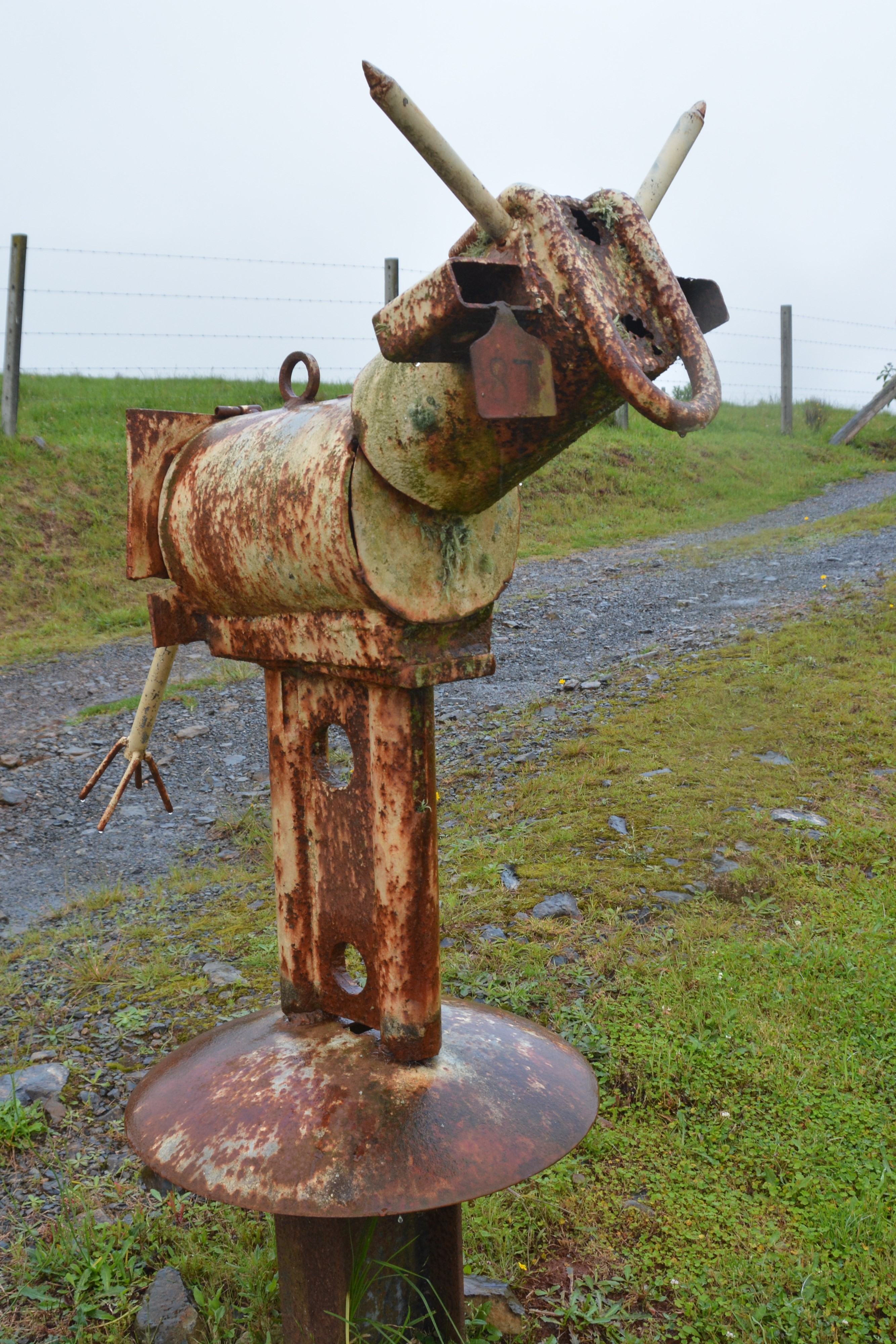



So that’s exactly what we’ve done. Maybe the weather will come good in a week or so and then we’ll head for the beach. In the meantime, the best place to be is Oxley Wild Rivers National Park and the adjoining parks to the north, all of them featuring beautiful scenery, deep gorges, overflowing rivers and stunning waterfalls.
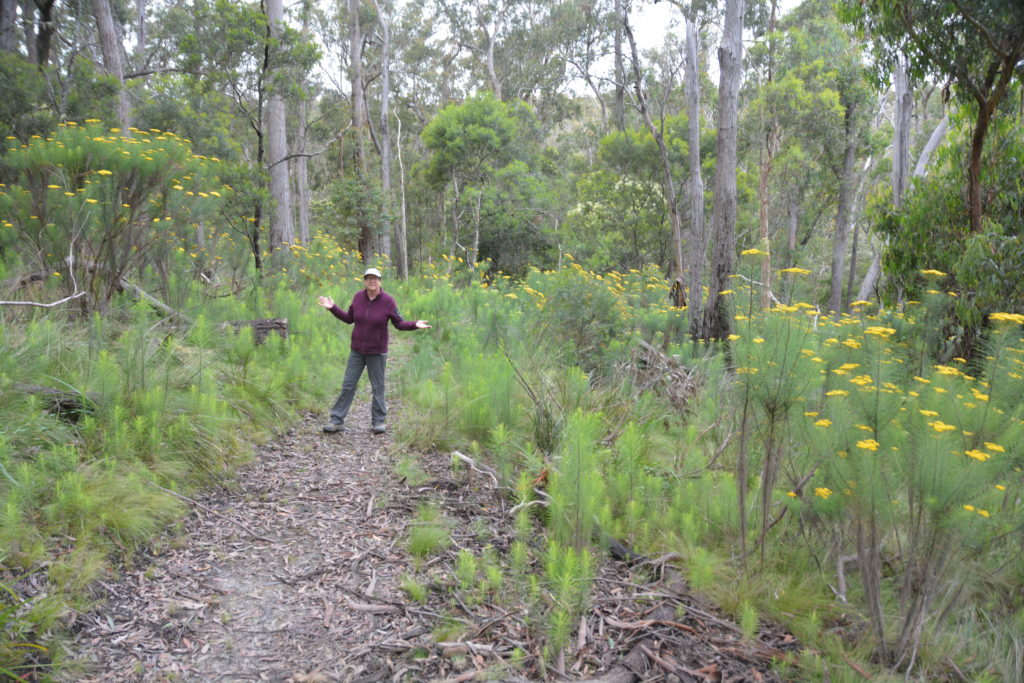
After camping at Tia Falls and checking out awesome Apsley Falls we headed a bit north and came back into the national park south of the attractive rural town of Armidale. From here we hit Dangars Falls which featured a flooding Salisbury Waters with its fast-moving frothy brown water falling off the 65 metre escarpment into the deep gorge below. The roar of the crashing water, the air currents flying the spray upward from the gorge and the sheer depth of the gorge itself made a spectacular scene. Sure, this waterfall would be nice any time of year when the river spills its trickle down into the gorge below but right now it is absolutely world class.
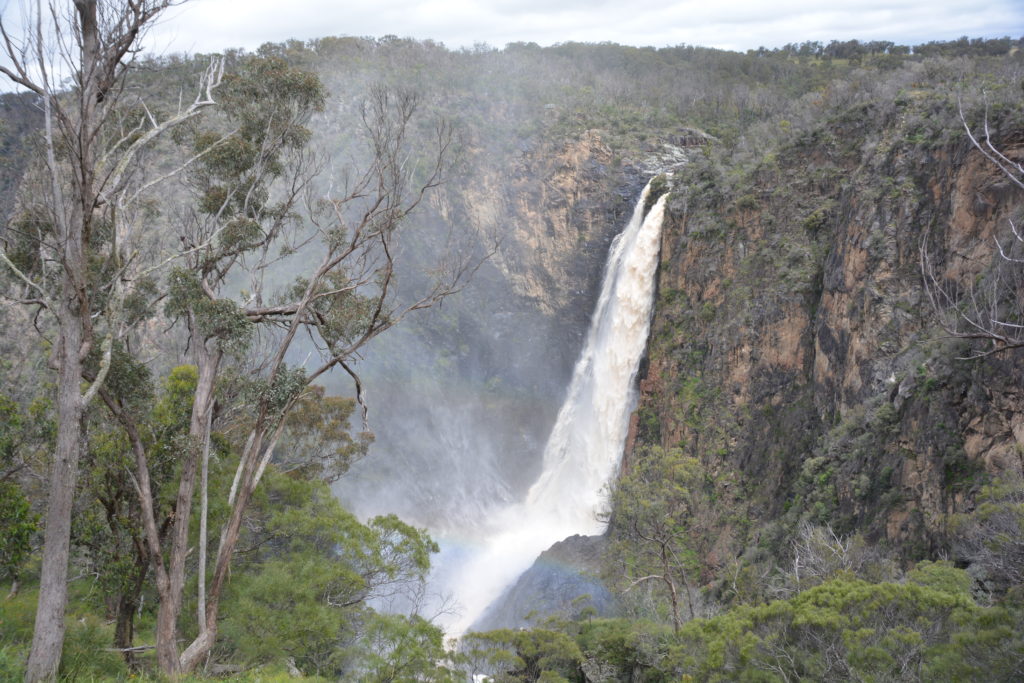
But wait, there’s more. We made our way to Metz Gorge and fell for the unheralded Baker Creek Falls as the rush of water bounced down multiple steps on its way through the gorge’s narrow walls. Does anyone get tired of this stuff?
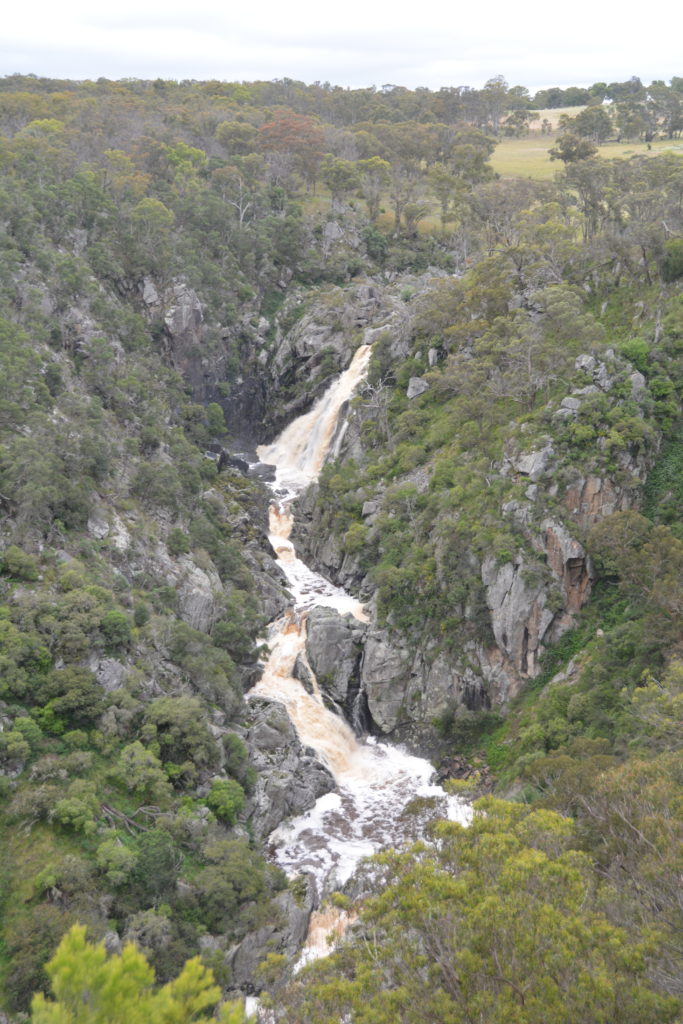
Seeking another quiet night camping by ourselves, as we’ve had the last couple of nights, we drove deep into the national park and camped at Long Point, the only souls for probably 20 kilometres. Yes, now that you asked, the sporadic drizzle was annoying but we were surrounded by beautiful Aussie forest and still had a fire to keep us warm.

There is something about seeking out these beautiful but remote places that to my thinking require three elements. First, you must have the sense of adventure, willing to step out of your comfort zone, do something a little edgy. Second, you need a sense of curiosity, keen to see what is at the end of a long track or what the view might be at the lookout, whatever the case may be. And finally, you must have a sense of wonder, to appreciate and enjoy something new, the feeling of learning and experiencing something different. With these three elements you can discover almost anything. And we were getting all of this in spades.
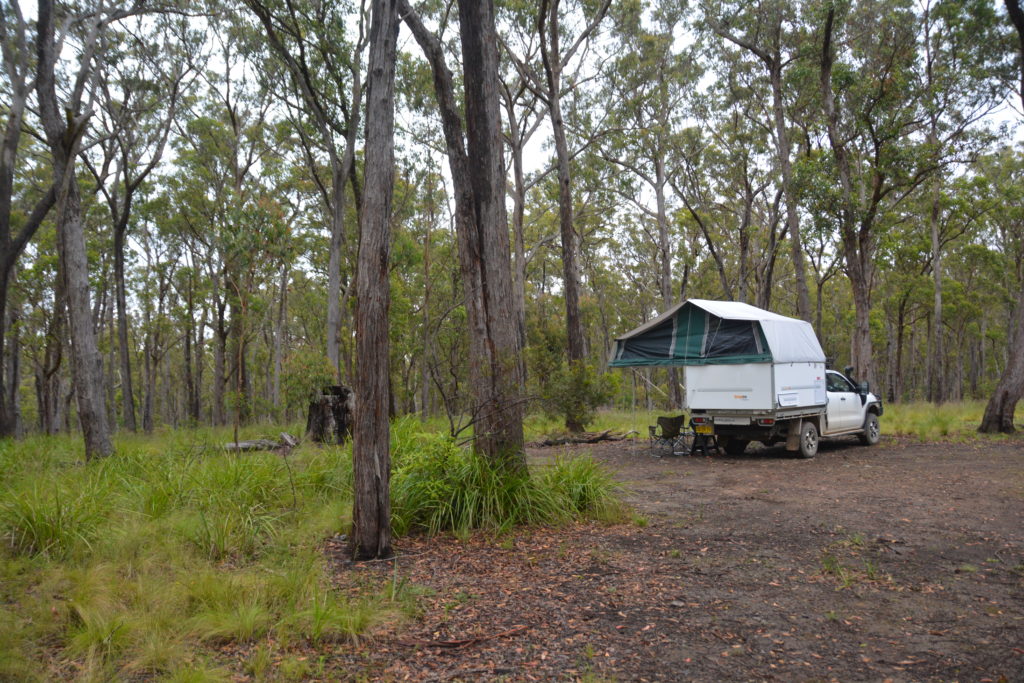
Our path to discovery led us to Wollomombi and Chandler Falls which are formed by two rivers of the same names that tumble off the New England Tablelands into the deep gorges they have formed over millions of years. These two waterfalls at flood levels are absolutely amazing, huge volumes of water flying off the cliffs, crashing below, the sound of thunder echoing up the gorge, the sense of wonder working in overdrive. John Oxley, the first European to see these falls, wrote in his journal he was ‘lost in astonishment’ when he saw them. John, we totally agree.
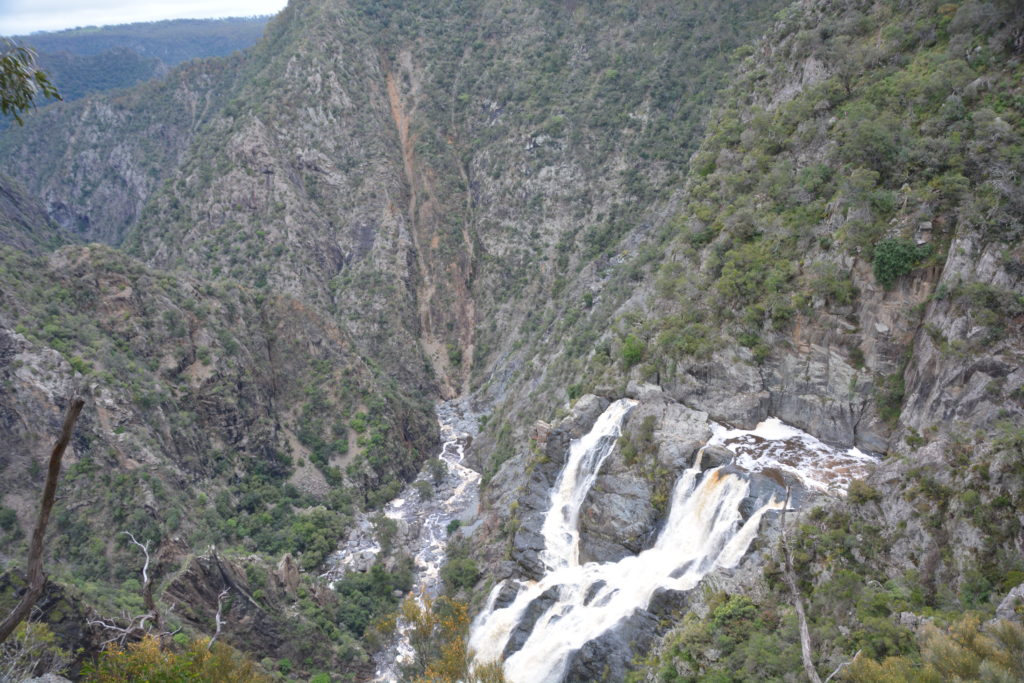
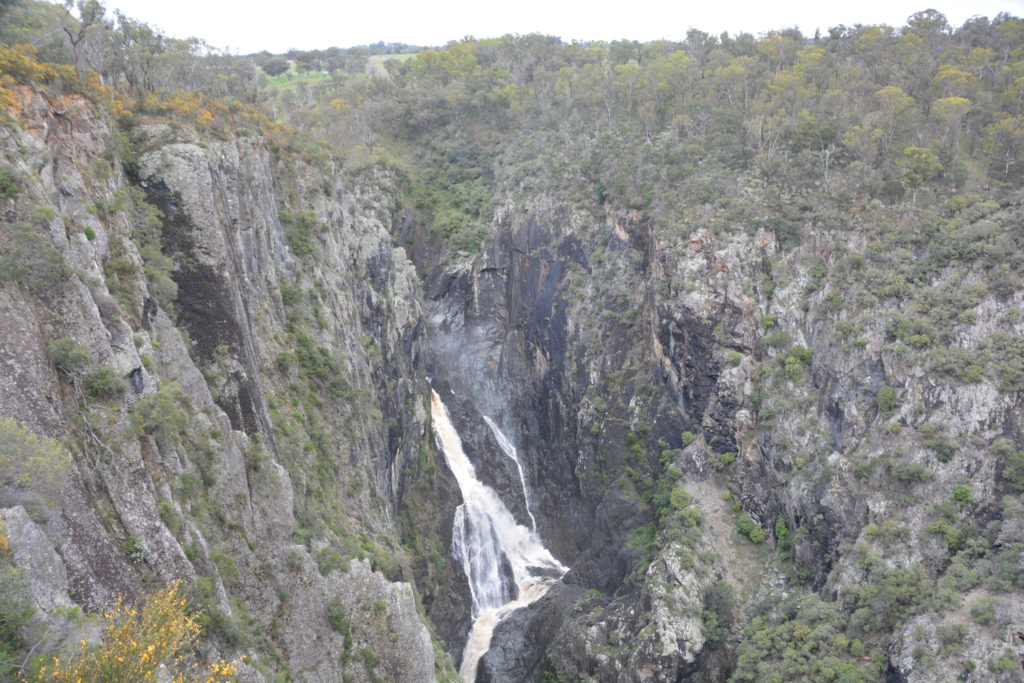
But the really amazing feature of these two falls is that they are less than a kilometre apart, their respective catchment areas almost merging before they fall off the edge. To stand in one place and see two large waterfalls so close together is a unique experience. And to top it off, Wollomombi Falls is the second highest falls in Australia, falling over 220 metres. Yeah, man.
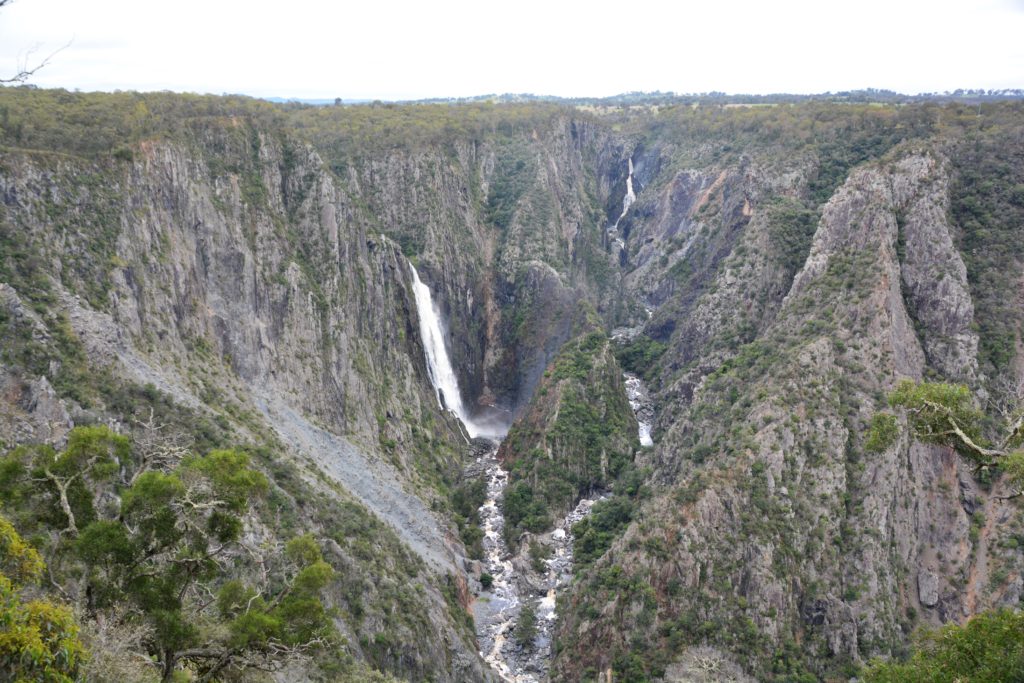
We spent most of the day at these falls, doing the two extensive walks that provide panoramic views of the deep gorge below us and the two waterfalls. From nearby there we followed a dirt track deep into the Styx River State Forest, our sense of adventure being tested as the track turned muddy and a bit sketchy in places, to finally pop out at Wattle Flat, a large flat area on the banks of the Styx River where we set up camp, the river running noisily by us, birdsong in stereo, a chorus of frogs after dark, us all alone again. All we needed to do was pay the ferryman (check your Greek mythology).
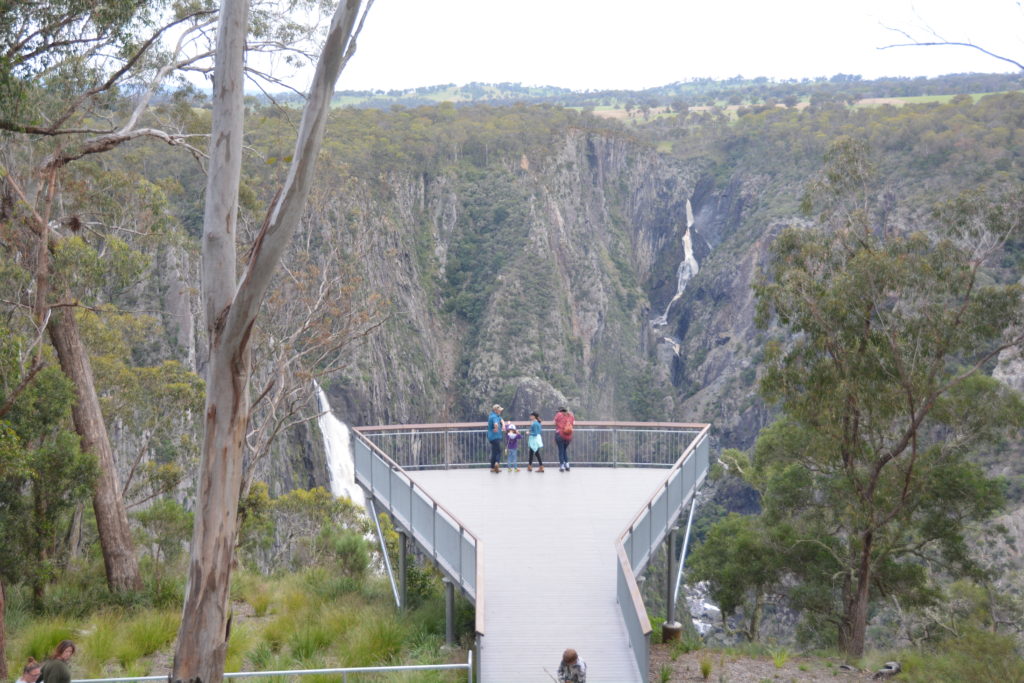
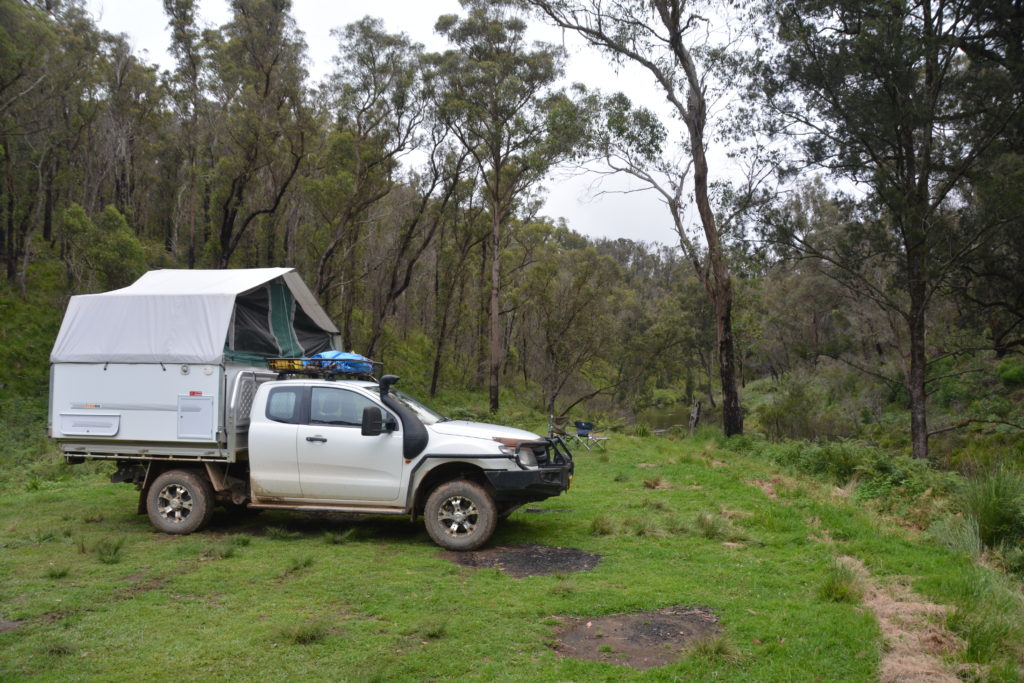
The next day we headed up a narrow track called the Forest Way, misty fog lingering in the trees, the young gums growing on the track’s edge acting as a car wash for Wanda. Eventually we entered New England National Park and followed the road to the end at Point Lookout, a surprising 1563 metres (about 5,200 feet) above sea level. How many places in Australia can you drive to this elevation outside of Kosciusko? I’ll bet its very few.
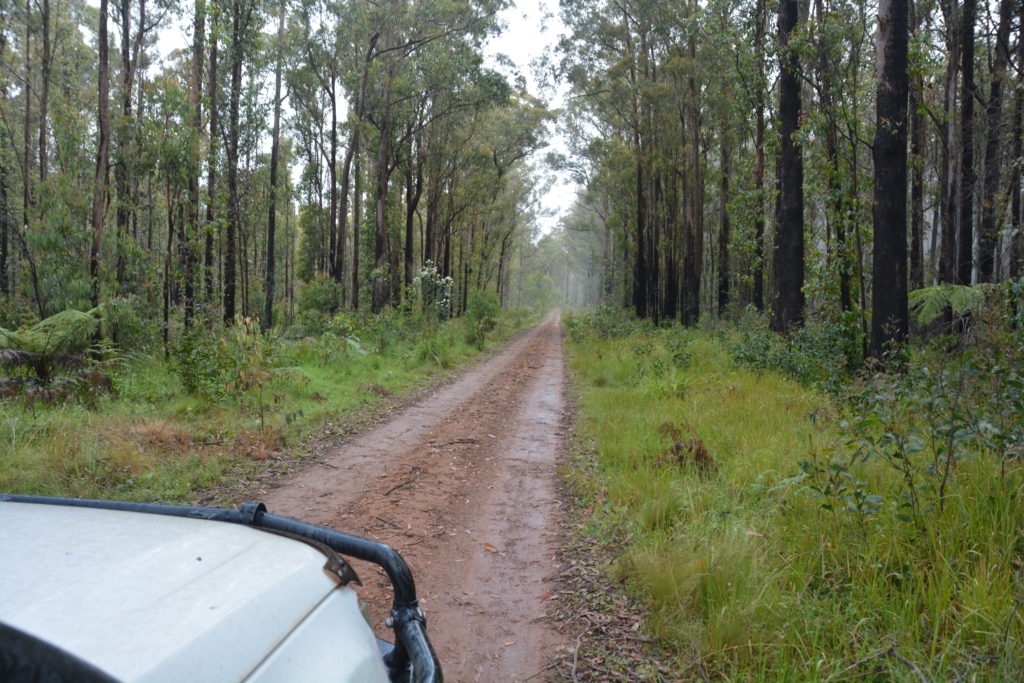
The steep mountain slopes are covered in thick rainforest, particularly the Antarctic Beech whose branches are often draped in hanging moss and covered in lichen. Antarctic Beech are a remnant from the time of Gondwana, a time when all continents were connected and their longevity makes them very unique.
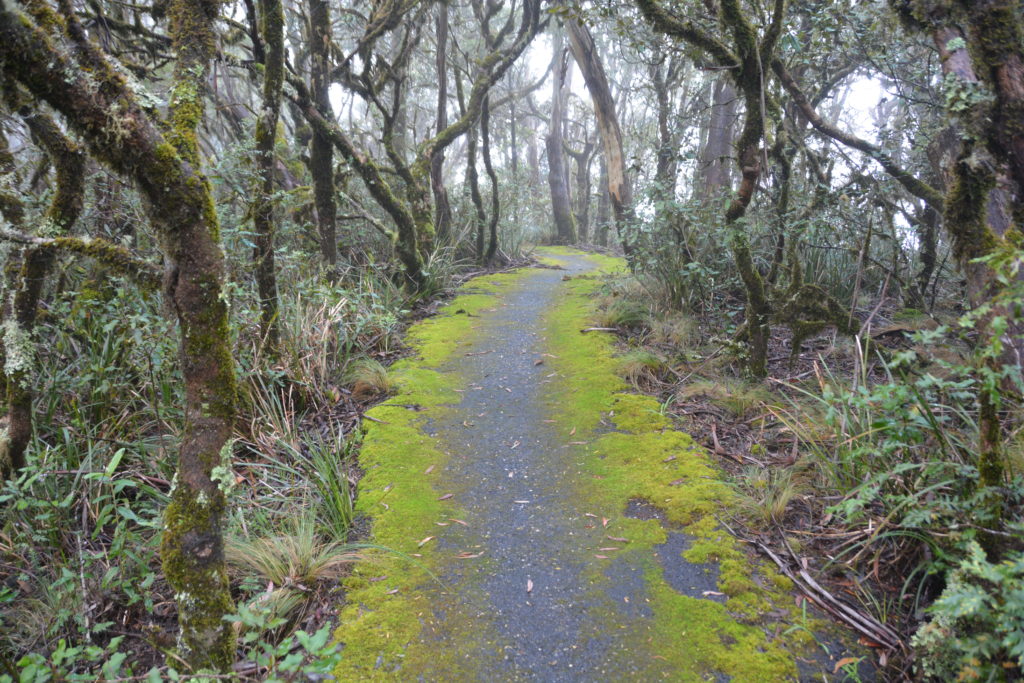
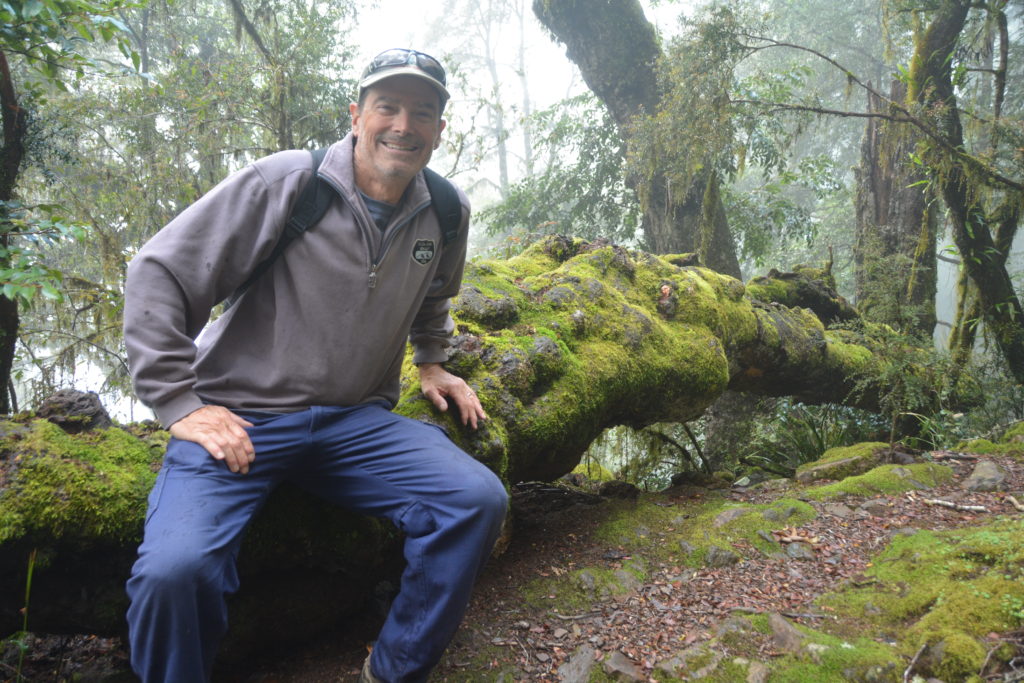
We entered a magical world on two rainforest walks, all shrouded in thick fog, water dripping from the canopy of green moss, ferns and trees. It was like a mystical fairyland, micro communities of plants growing on each other, green moss covering our path, everything dripping wet, an unknown secret world waiting for the curious to enter. We loved it.
Here’s a few shots from our walks in the rainforest.
From there we popped out on the highway for a few clicks before entering Cathedral Rocks National Park and a completely different environment. No rainforest here, this was more traditional bush with the centrepiece being Cathedral Rock itself, an ancient pile of granite boulders piled up like giant marbles. And wait, could it be, no, yes, it is, a bit of blue sky peaking out of the clouds and eventually spreading itself around. We hadn’t seen that for a few days!
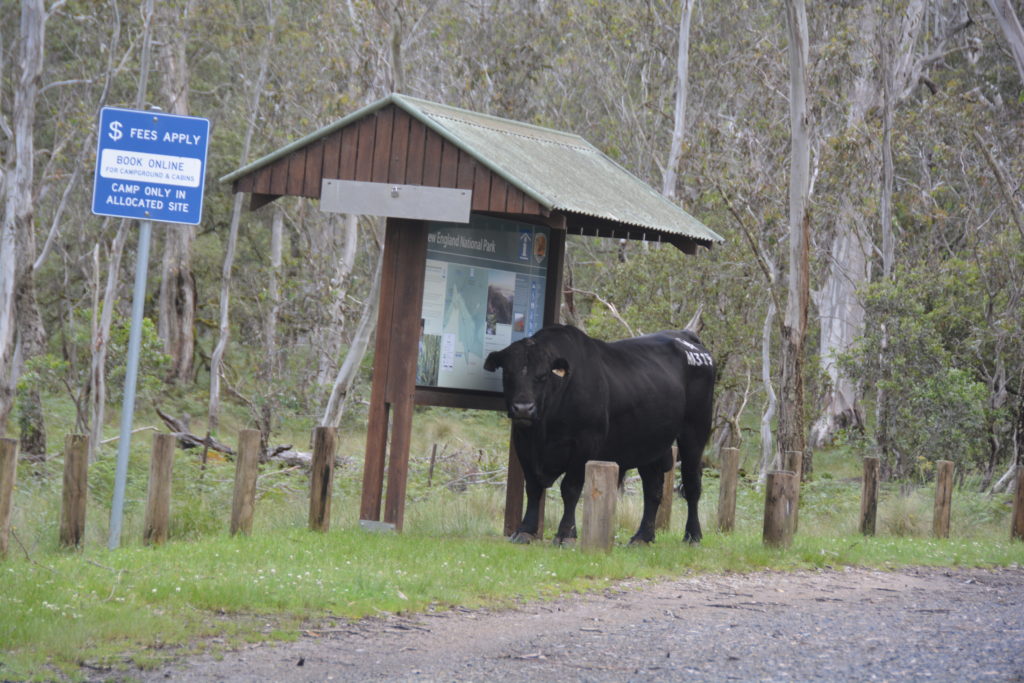
The walk up to the top of Cathedral Rocks is about 6km return, at first winding its way upward through large piles of huge boulders with the bush going through its regrowth process after the fires two years ago. But the final assault to the summit was a Grade 5 serious scramble up and over – or crawling under – these huge boulders until finally, a bit scraped and stretched, we popped out at the summit. Yes, great views, but also a mutual pat on the back because that last section of the climb was designed for younger people.
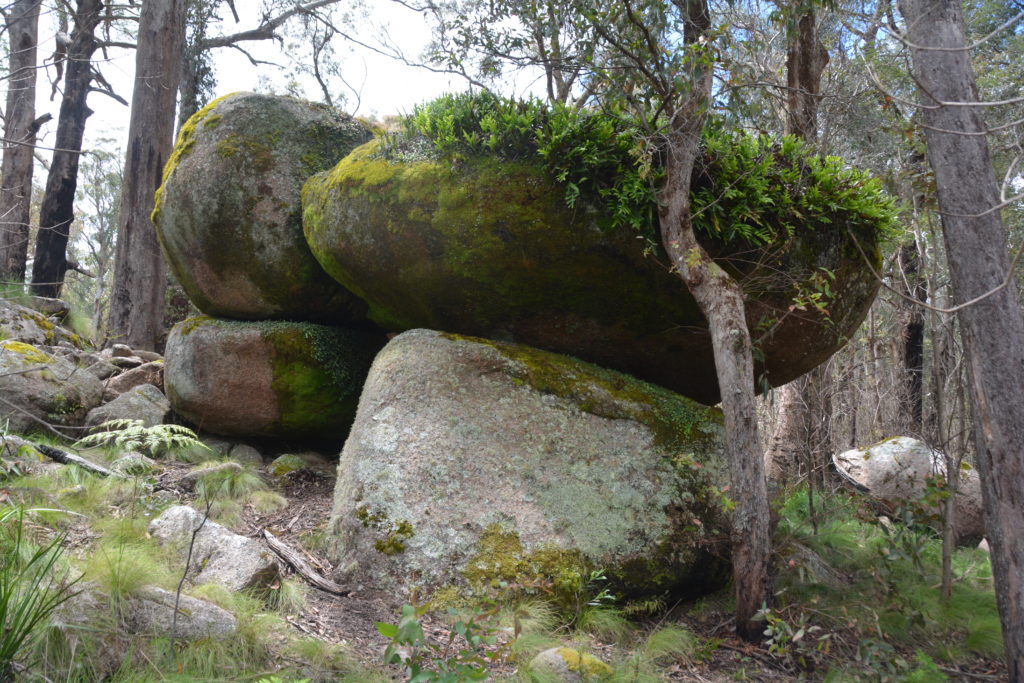
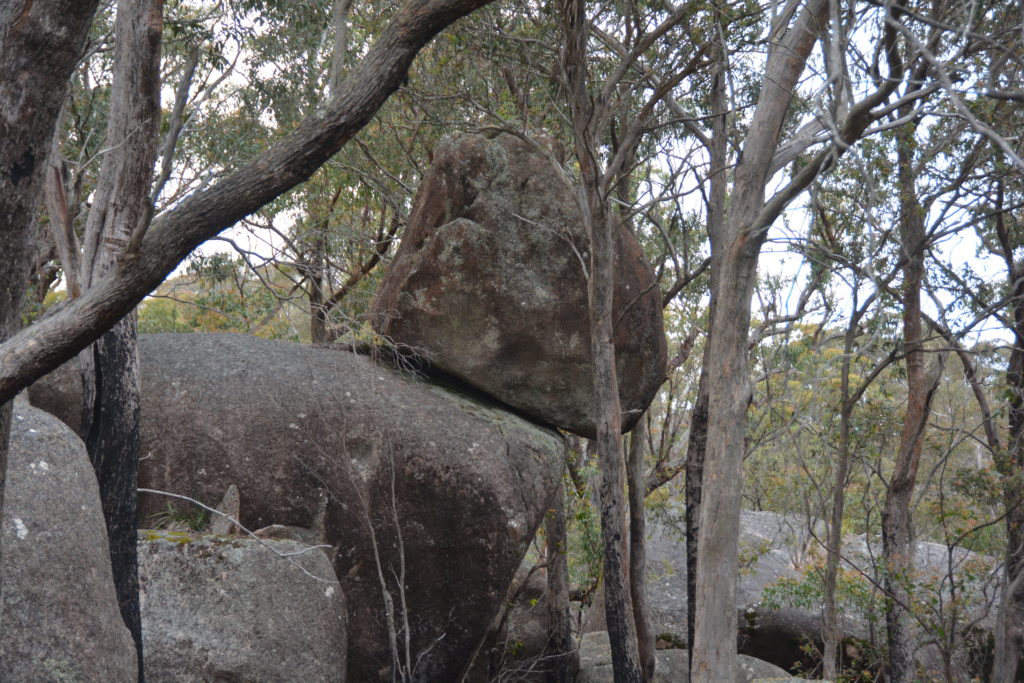
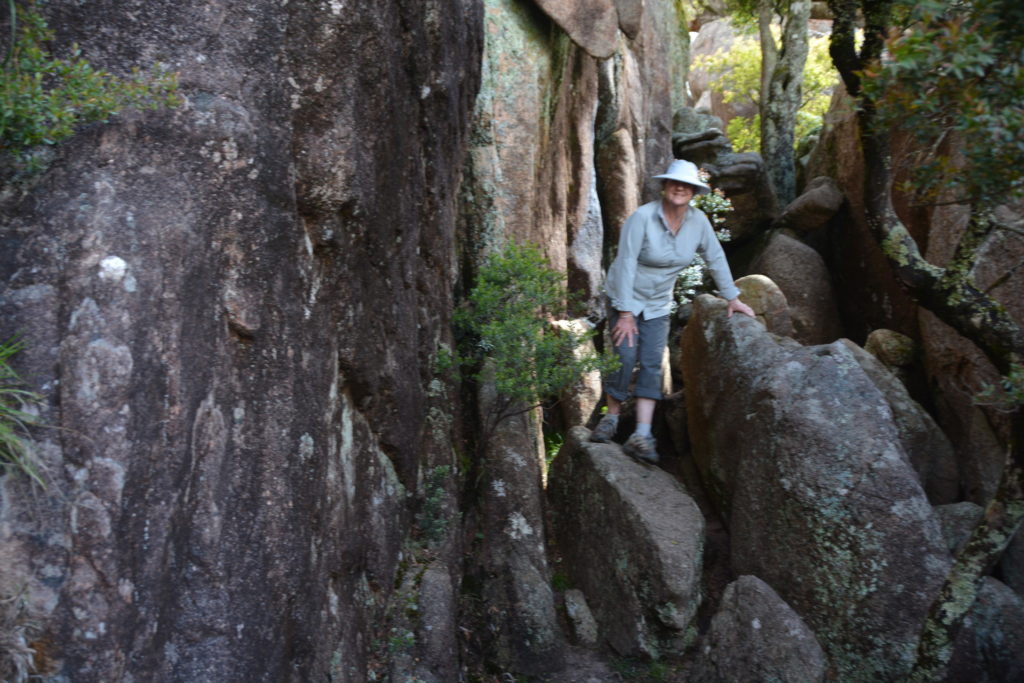
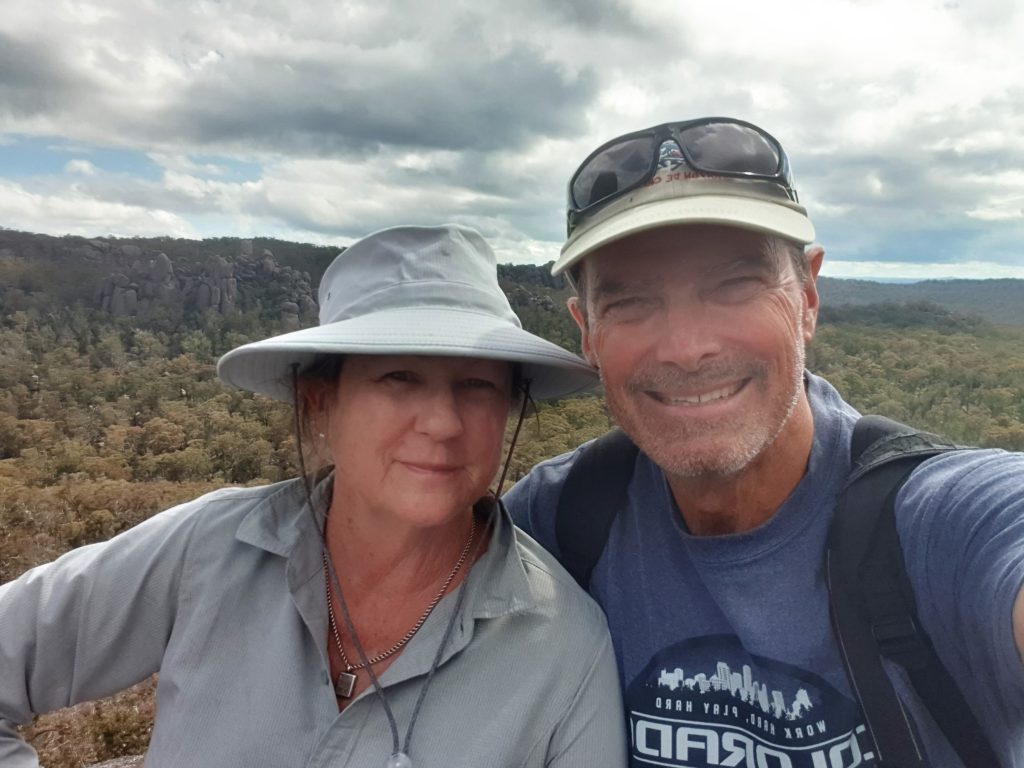
We made it – the summit!
After camping that night at the base of Cathedral Rock we headed toward the little regional centre of Dorrigo where we had showers at the showground, filled our water tank and stocked up on supplies. Dorrigo is the centre of the rainforest area, surrounded by national parks, lovely waterfalls in all directions. Statistics don’t lie – Dorrigo gets about 2,000 ml of rain a year, making it one of the wettest towns in the state. And true to form, it was raining while we were there with low fog obliterating any views down into the dark thick rainforest we may have had from the renowned Skywalk observation point.
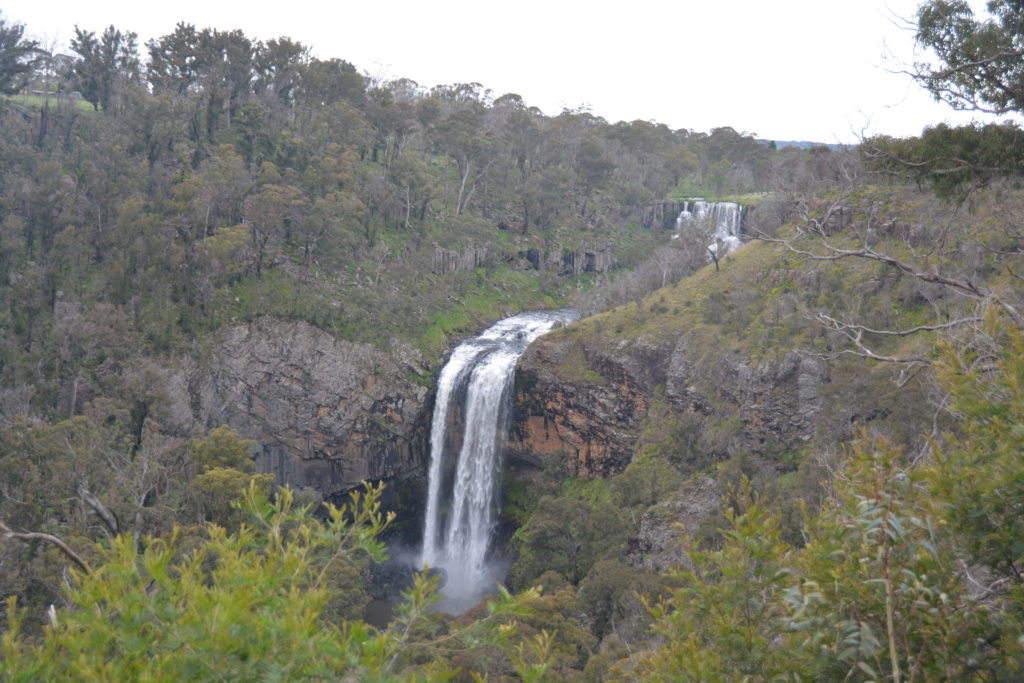
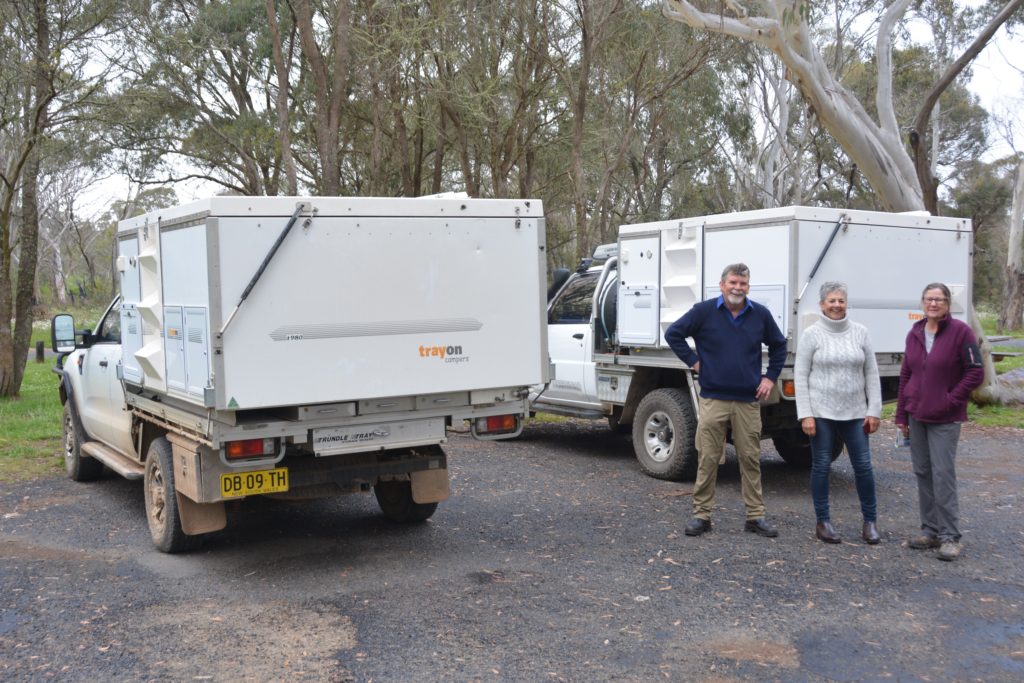
Never mind, a little rain isn’t going to stop us, we checked out Dangar Falls – not to be confused with the previously visited Dangars Falls – and then headed north along a series of roads and slippery trails through three different national parks that were created in the 1990’s to protect this priceless and impenetrable rainforest before dropping down to the Nymboida River in Nymboi-Binderay National Park where we camped at Platypus Flat.
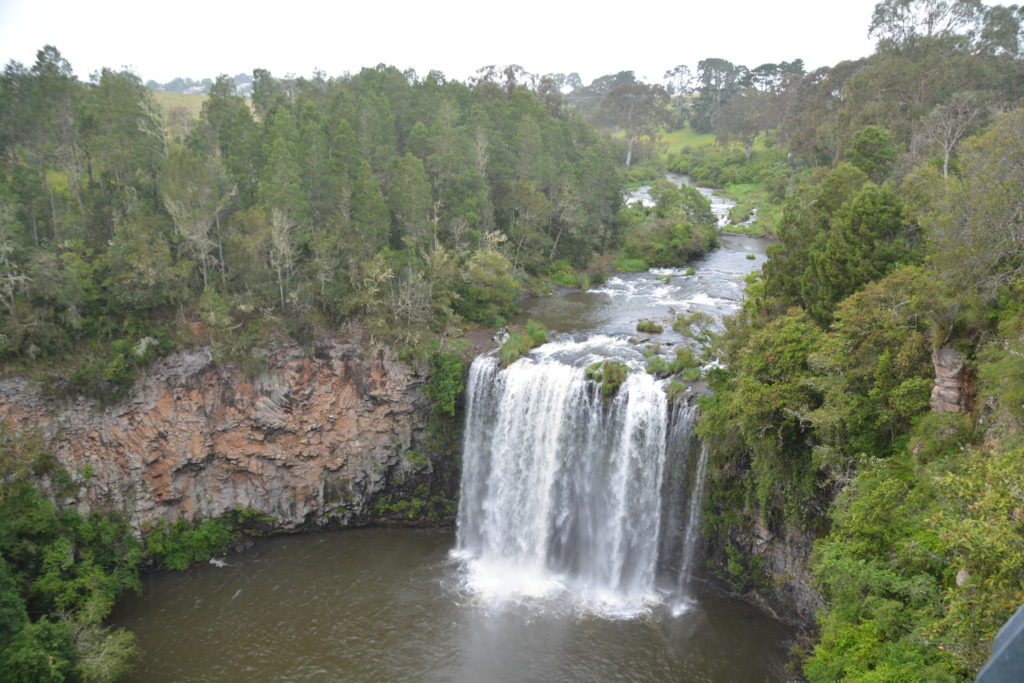
The rainforest was at its dripping soggy finest packed in all around us and, alas, no sightings of platypus and we stayed indoors all night due to the steady rain. Still, the rushing river, at flood levels just below our campsite, sang a fabulous song all night long.
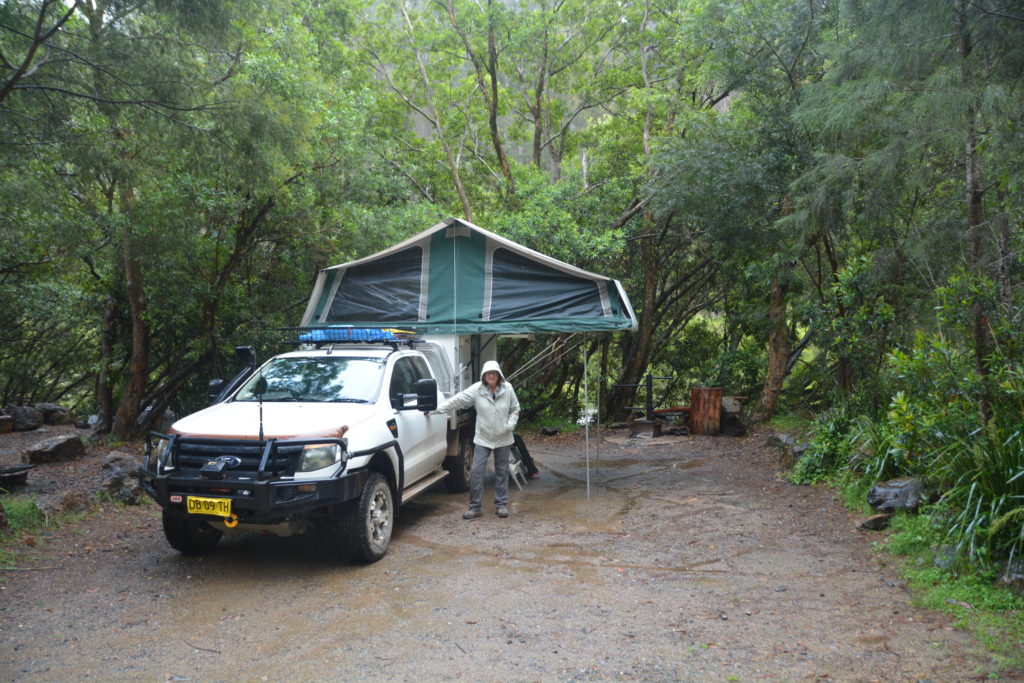
This was supposed to be a sunny holiday with a mix of beaches and mountains but it’s turned into a soggy but enjoyable path of discovery through beautiful national parks in the New England Tableland area. Having said that, we hope the rain ends soon and the blue skies return!
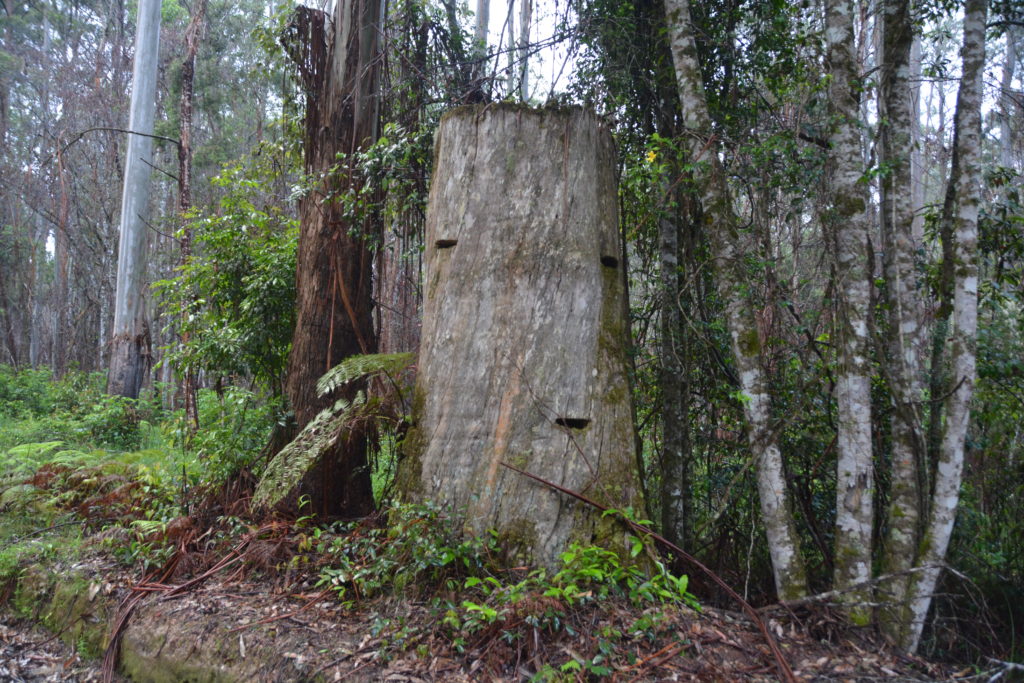
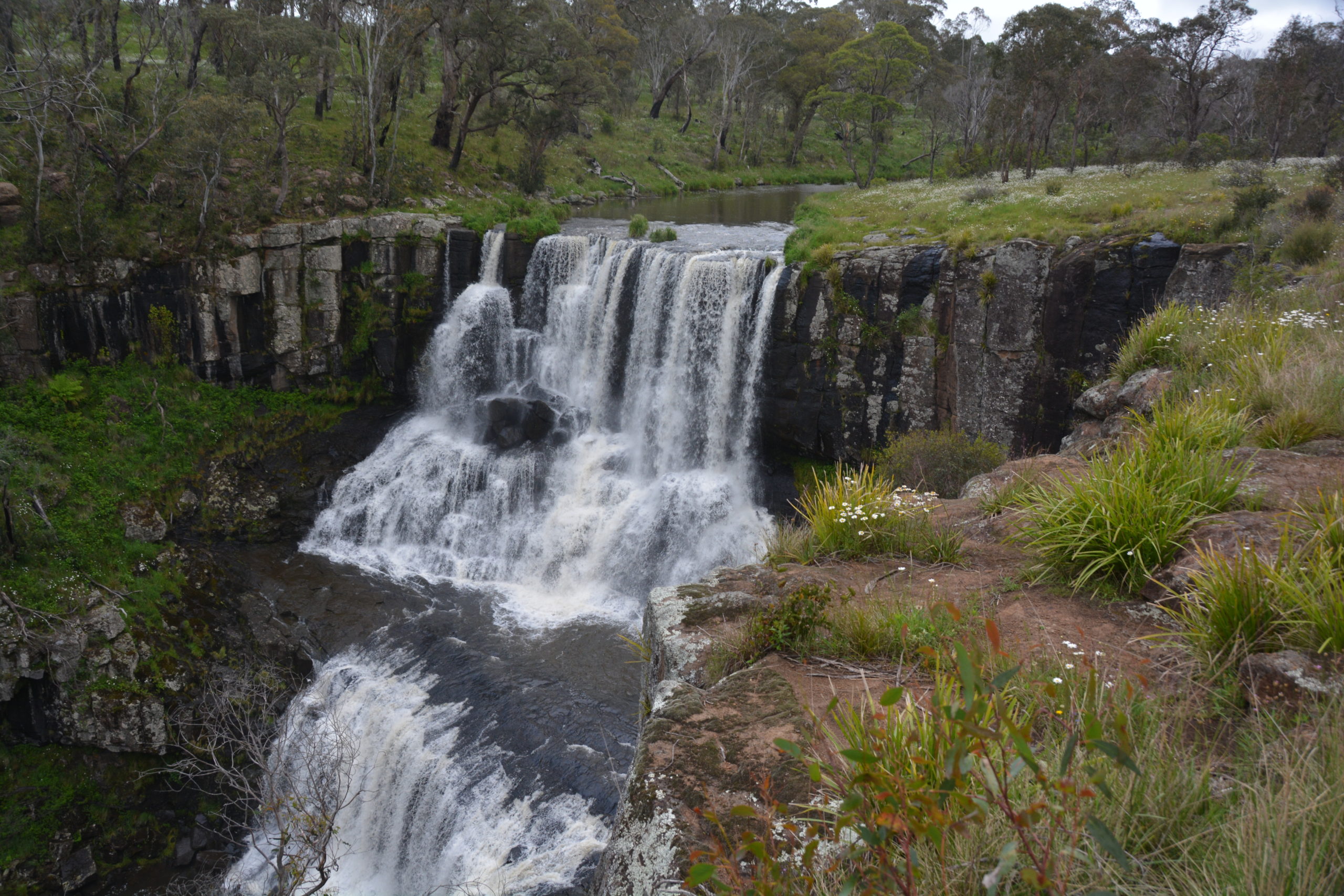
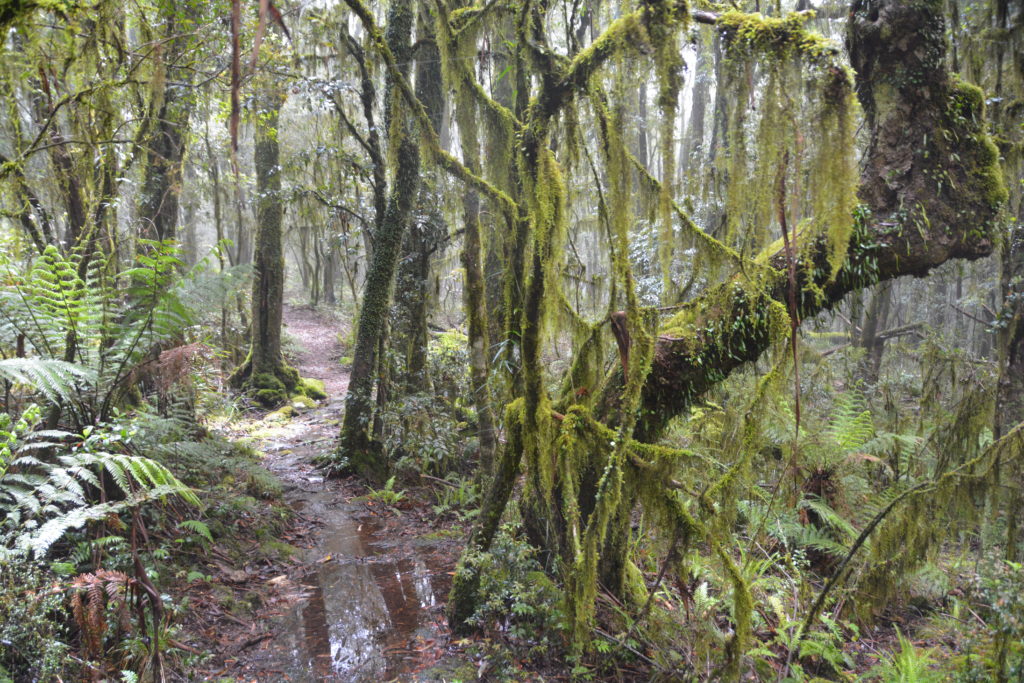
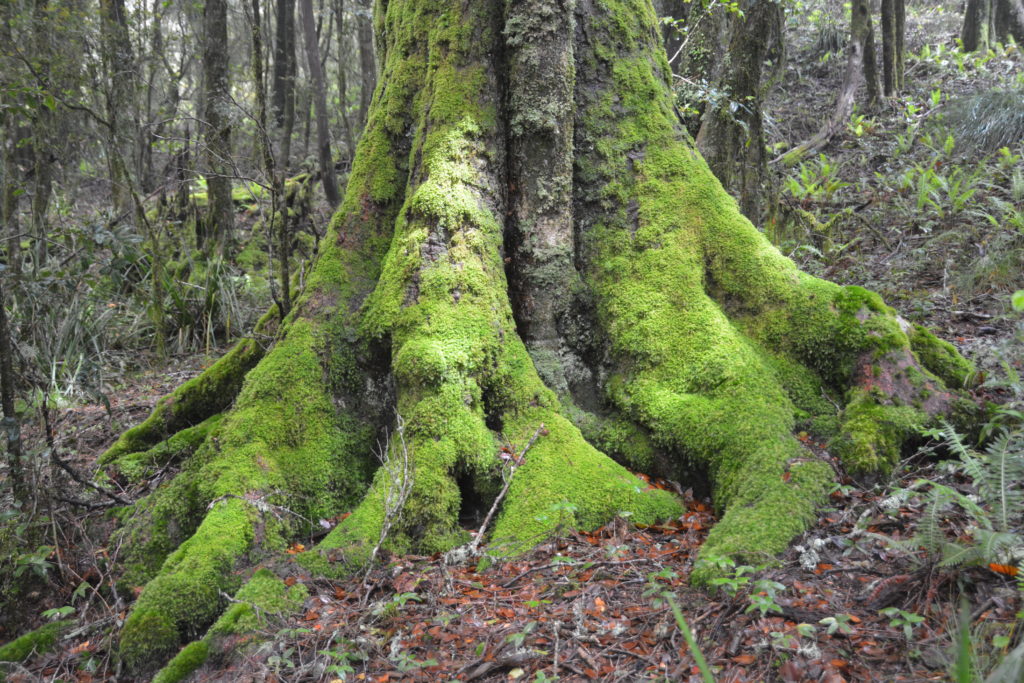
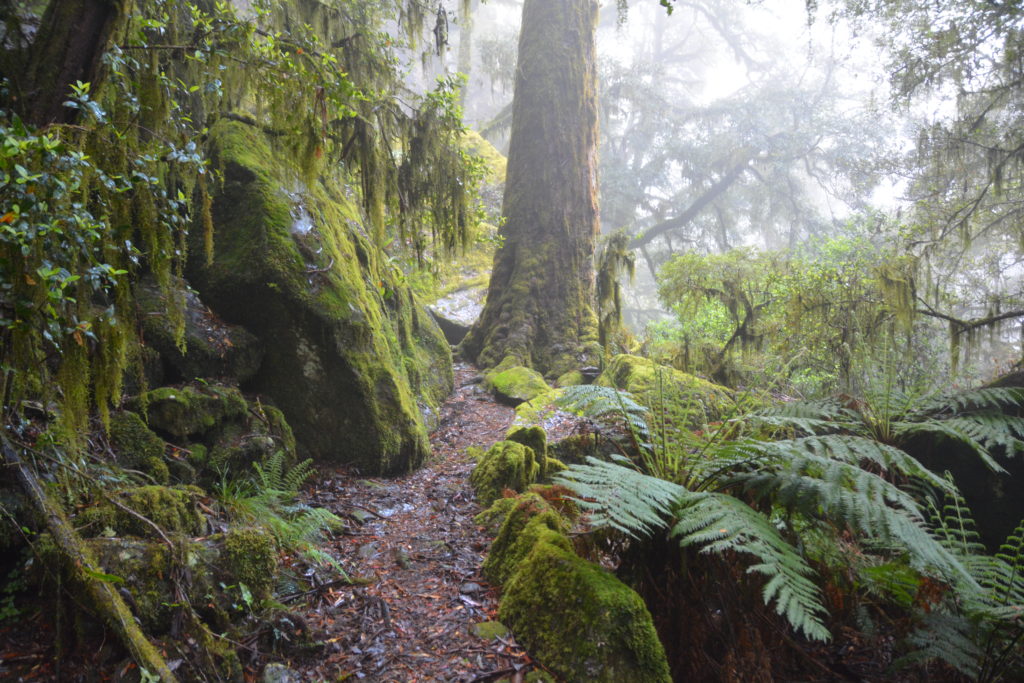
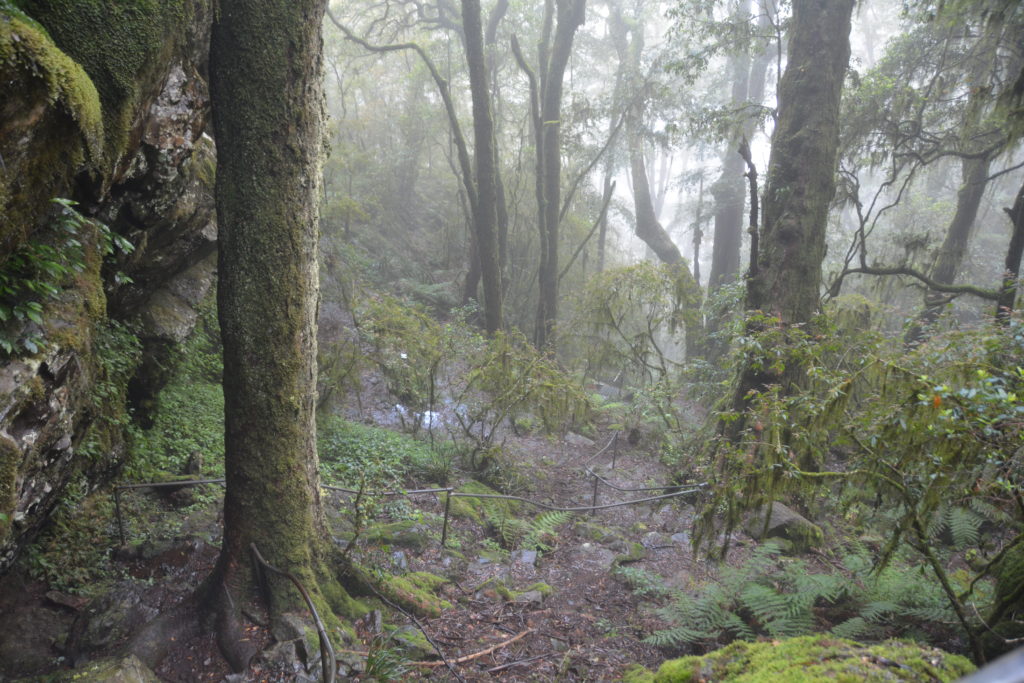
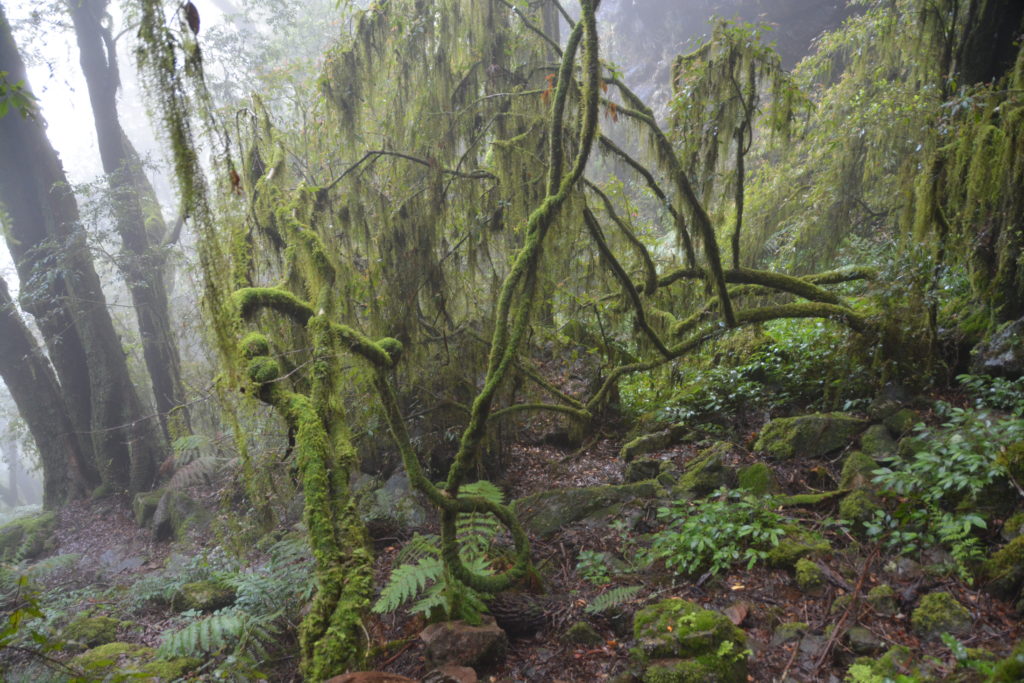
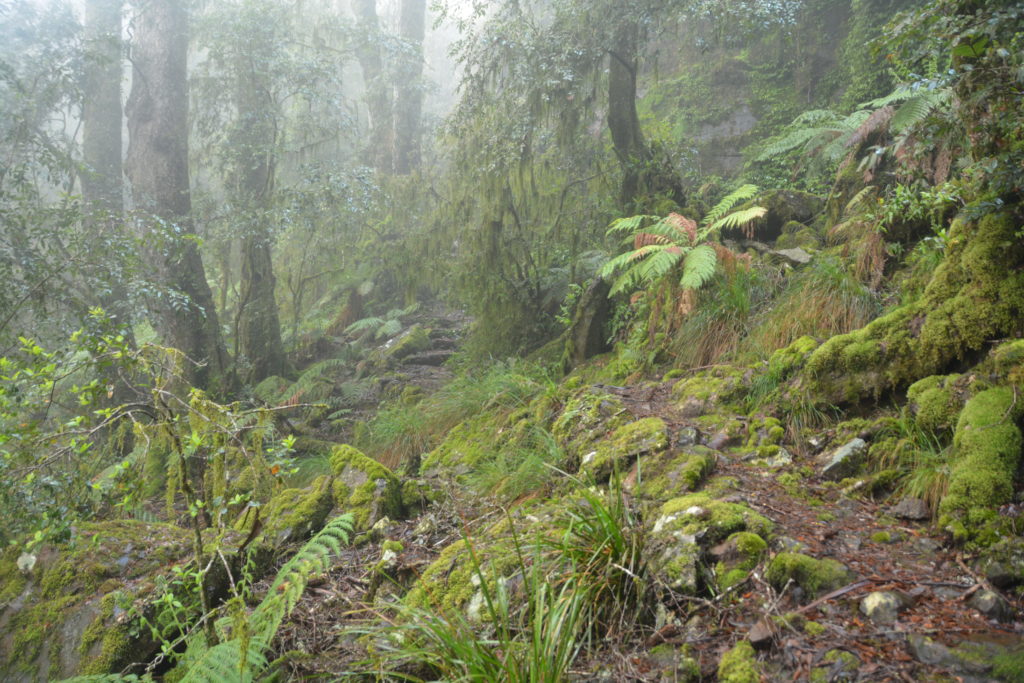
Comments
Gorgeous gorges and waterfalls — No Comments
HTML tags allowed in your comment: <a href="" title=""> <abbr title=""> <acronym title=""> <b> <blockquote cite=""> <cite> <code> <del datetime=""> <em> <i> <q cite=""> <s> <strike> <strong>